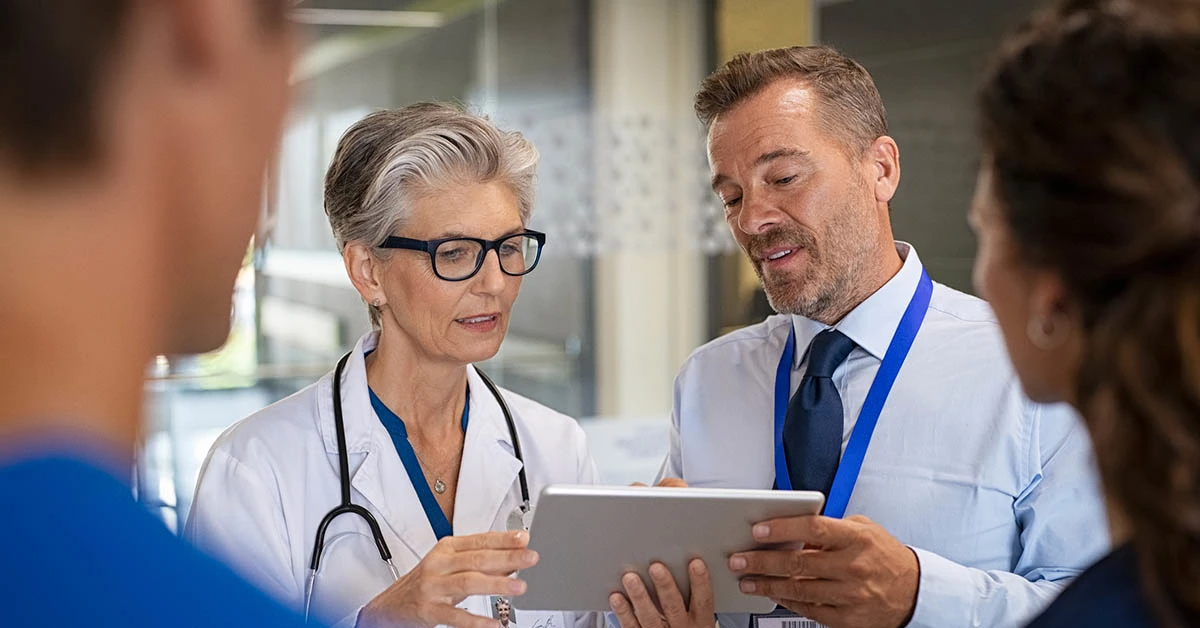Why is pharma buzzing about real-world evidence?
2023년 1월 18일
저자: Xuanyan Xu

Real-world data and analytics can accelerate drug development and provide insights that clinical trials can’t
By now, you are probably aware of real-world evidence and real-world data in pharma – but perhaps you still need to know why they are valuable to pharmaceutical companies and what sources for RWD/RWE are available. Let’s break it down.
Real-world data (RWD) is healthcare information that comes from outside the clinical research setting. It includes data like:
Electronic health records (lab results, treatment plans, radiology images, etc.)
Disease and product registries (e.g., Alzheimer’s Prevention Registry, GenomeConnect, Rare Disease Registry Program)
Claims and billing data (for example, data from health insurance companies that includes information about procedures and demographic information)
RWD data from “wearables” and health monitoring devices (e.g., heart rate tracking from an Apple Watch or Fitbit)
Real-world evidence (RWE) comes from analyzing the above-mentioned types of data. In short, real-world data + analytics = real-world evidence.
What is driving the interest in real-world evidence in pharma?
Here are a few major factors contributing to the pharmaceutical industry’s excitement about RWE:
Because regulators take RWE data into account, it has the potential to impact approvals and accelerate the drug development process, which could save drugmakers a lot of money at a time when cutting costs is critical. One such example comes from Amgen Science, which had a cancer therapy that won its first regulatory approval due to a single-armed Phase 2 study supported by RWE.
Real-world evidence complements clinical trials data by providing insights that trials can’t – for instance, safety and effectiveness data from a patient’s daily life. “Sometimes surprising findings can emerge when the narrow constraints of clinical trial eligibility and intent-to-treat analyses are set aside,” explains Nancy A Dreyer in Stat News. “That’s why it’s time for biotech and pharmaceutical companies to pay more attention to understanding, and undertaking, real-world studies.”
Insurance companies and other stakeholders must have a solid understanding of what benefits a drug offers to patients, and RWE can help bolster their confidence in a treatment’s effectiveness. “Insurance companies, particularly in the US, are looking for medicines that can demonstrate improved patient outcomes and reduce hospitalization rates and length of stays,” notes Ed Miseta of Clinical Leader.
RWD databases
Real-world data is valuable, but it is everywhere, in many different forms, which makes it complicated to harness. Fortunately, numerous organizations, nonprofits, consortia and companies are dedicating themselves to the challenge of collecting and consolidating RWD data so that it can be put to good use.
The sources are currently scattered, but they include RWD databases and resources such as:
The Sentinel Initiative, a system created by the US Food and Drug Administration (FDA) to connect healthcare data from many different databases and monitor safety.
The Electronic Health Records for Clinical Research Project (HER4CR) Project, a platform that brings together hospital data from around the globe to help identify patients for clinical trials.
PatientsLikeMe, an online platform where hundreds of thousands of members get advice for their conditions from fellow patients; compare treatments, symptoms and side effects; and track their own personal health data in real-time.
The Accelerated Cure Project Repository, a massive collection of biological samples and data from people with MS, to help researchers and hopefully lead to new breakthroughs.
These types of databases for real-world evidence are just a sampling of what’s currently out there.
The Growth of RWE clinical trials
Pharma companies are finding that RWD data can play a role in all stages of the drug development process, from early discovery to post-market. For the clinical trial stage, real-world evidence can offer valuable observational data that a traditional trial simply couldn’t provide. As a result, real-world evidence studies have been growing steadily, reaching a new high in 2021.
The future of real-world data and real-world evidence in pharma
Though real-world data is as old as the world itself, a scientific community that has been accustomed to focusing on traditional clinical trials is still learning how to use it and trust it in their research. But there is no question that it’s an exciting treasure trove of information that is being utilized with increasing frequency in different ways.
The COVID-19 pandemic certainly demonstrated the importance of embracing and understanding RWD. The COVID-19 Evidence Accelerator – which has provided “a forum for stakeholders across the health care spectrum to share real-world data and to generate ideas” – is a great example of how the pharma community is utilizing RWD and RWE to advance research.
We expect to see many more projects like this in the future as real-world data and evidence becomes a more integral part of the drug development process.
This article was originally posted in Elsevier’s Pharma R&D blog on July 30, 2019, and updated in March 2022.
